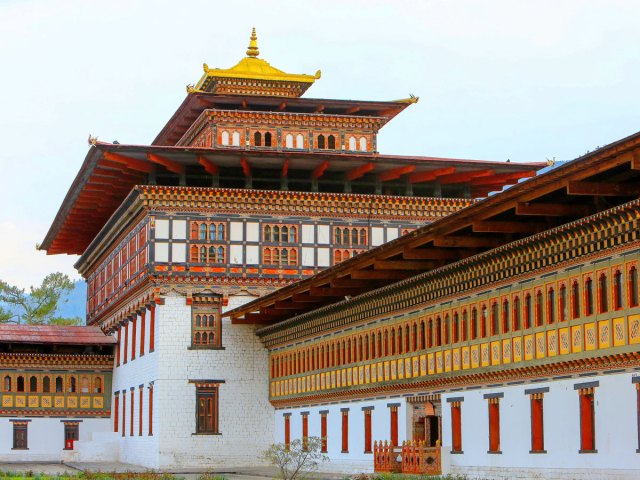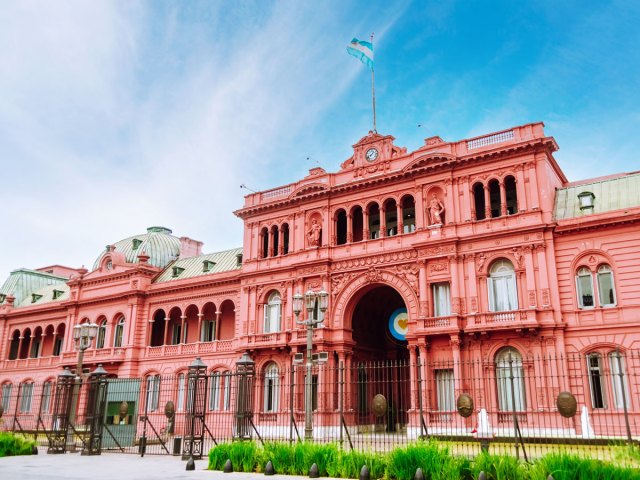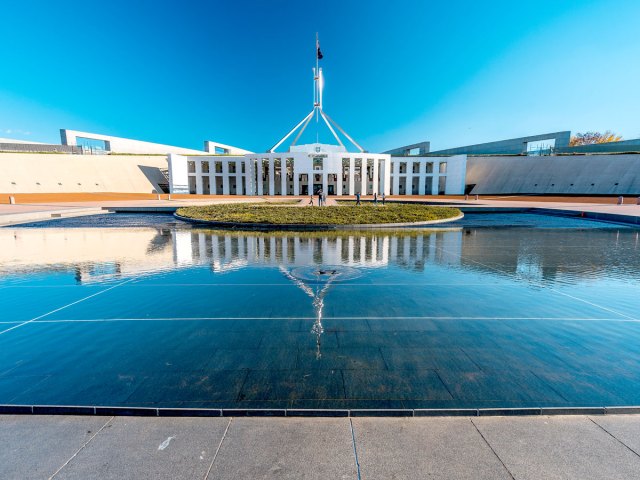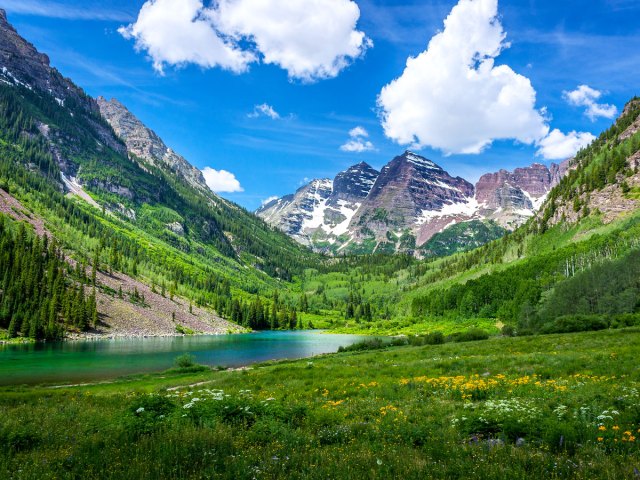Civic structures are called on to be more than office space, where the day-to-day business of governing gets done. They are often designed to be statements of a nation’s wealth, pride, and heritage. While some are stern and understated, many important government buildings are intentionally overwhelming in both architecture and opulence. Here are six temples to public governance to explore on your travels.
Tashichho Dzong – Thimphu, Bhutan

In the high Himalayas on the west bank of the Wang Chu River stands a mighty fortress, one of the largest buildings in the Kingdom of Bhutan. The fortress (or dzong) was built starting in 1216 and passed through several Buddhist sects before becoming the seat of Bhutan’s government in 1962. Today, the often-rebuilt fortress and monastery looks out over the valley’s serene terraces, and is home to Buddhist monks and government ministers. The gleaming white perimeter of the dzong is guarded by four three-story towers, their roofs sparkling with red and gold.
After passing through a security check, visitors are free to roam around the northern part of the complex. Wander the vast flagstone courtyard, where ceremonies are held and prayer wheels rotate peacefully in the wind, then climb the steep wooden stairway to the top of the utse, or central tower, for views of the expansive fortress.
Reichstag – Berlin, Germany

One of the most historically significant structures in a city that is teeming with elegant and important buildings, Berlin’s Reichstag is the seat of power for the Bundestag, the only federal representatives directly elected by the German people. Built over 10 years and completed in 1894, it sits along the River Spree and served both the German Empire and the Weimar Republic. One month after Adolf Hitler was appointed as chancellor in 1933, the building was torched, allowing the Nazis to consolidate power and persecute their political opponents.
Fortunately, the building survived fire, bombing, and even being wrapped in fabric as an art installation. Remodeling and modernization was completed in the late 20th century, and the Reichstag reopened in 1999. The work included the construction of an enormous glass dome, which offers 360-degree views of the surrounding city. Visitors today may tour the dome and the rooftop garden. Admission is free but must be reserved in advance.
Palacio Nacional – Mexico City, Mexico

The Aztec ruled their vast empire from the city of Tenochtitlán, and Spanish conquistadors decided to do the same, building Mexico City’s enormous Zócalo — the largest city square in Latin America — partly atop the ruins of Montezuma’s grand palace. Mexico’s seat of government occupies the entire east side of the square, sprawling almost 500,000 square feet. A UNESCO World Heritage Site, the Palacio Nacional also serves as the Mexican president’s official residence.
Construction on the building began in 1522, only for most of the structure to be destroyed by fire in 1692. Today, it combines Neoclassical, Baroque and Neo-Colonial architectural elements. The legendary Mexican artist Diego Rivera painted allegorical murals onto the frescoes of the grand stairwell. Titled The History of Mexico, they document the nation’s past from Mesoamerican times through the conquest to 1930. A 1935 fresco titled Mexico Today and Tomorrow also illustrates the political turmoil affecting the country. Admission is free, but you will need a visitor tag and a guide is recommended.
Casa Rosada – Buenos Aires, Argentina

Unapologetically pink, Argentina’s Casa Rosada (“Pink House” in Spanish) is familiar to theater lovers who may have never even set foot in South America. That’s thanks to the 1996 film Evita, based on the musical by composers Andrew Lloyd Weber and Tim Rice about the legendary life of Argentinian First Lady Eva Perón. In the film, Madonna (who portrays Perón) belts out the famous song “Don’t Cry For Me, Argentina” from the balcony of the palatial pink mansion, while impassioned supporters crowd the Plaza de Mayo below.
Completed on the site of a Spanish colonial fort in 1898, Casa Rosada and its interesting historical museum are free and open to the public Wednesdays through Sundays and on public holidays. Guided tours are available in English and Spanish; just note that you will need to present a passport.
Union Buildings – Pretoria, South Africa

Situated on the highest point in Pretoria, the historic Union Buildings — originally called the Government Administration Building — are widely considered to be the pinnacle of South African architecture. Architect Howard Baker envisioned the sandstone structure — completed in 1913 — as a modern-day Acropolis, adding Greek flourishes such as an amphitheater with seating for 9,000 people and elaborate gardens.
The site’s two wings branching off from a curved central building was intended to reflect the unity between the English-speaking and Afrikaans-speaking peoples of South Africa. Interestingly, the country has three capital cities: Pretoria, Cape Town, and Bloemfontein. In 1994, Nelson Mandela was inaugurated here as the first democratically elected president of South Africa.
Parliament House – Canberra Australia

One of the largest buildings in the Southern Hemisphere and one of the heaviest structures on the planet, Australia’s current Parliament House was the most expensive building in the world when construction began in 1981. Approximately 90% of the materials were sourced from Australia. In the forecourt fronting the Great Verandah, an enormous mosaic was designed by Aboriginal artist Michael Nelson Jagamara. Forty-eight columns crown the Marble Foyer, while the Great Hall showcases an enormous tapestry. Construction was completed as planned on Australia Day (January 26) in 1988. Queen Elizabeth II officially opened the Parliament House on May 8, 1988.
More from our network
Daily Passport is part of Optimism, which publishes content that uplifts, informs, and inspires.























